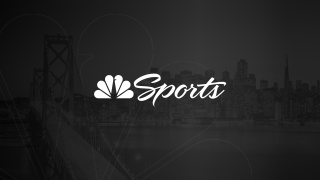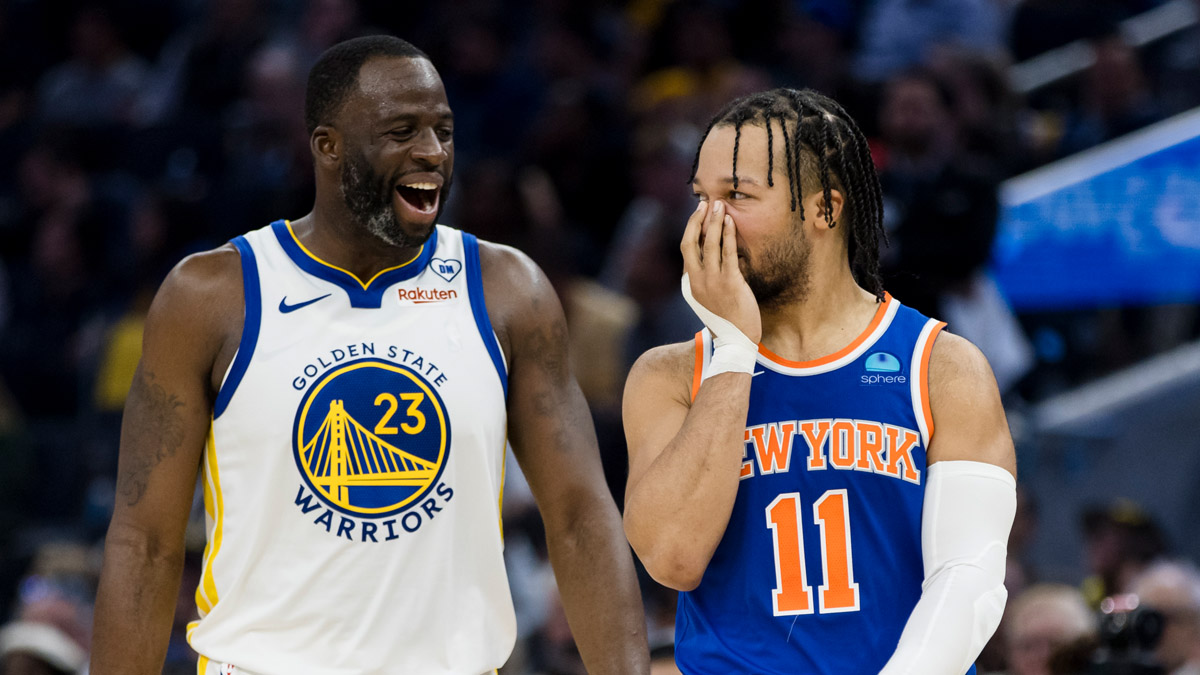
Charles Barkley said he was “disappointed” when Kevin Durant left Oklahoma City to join the Warriors, as he had been six years earlier when LeBron James left Cleveland to join the Miami Heat.
Charles doesn’t get it.
Asked about Durant’s move a couple weeks ago, Celtics legend Larry Bird explained that he “couldn’t imagine going to the Lakers and playing with Magic Johnson.”
Stay in the game with the latest updates on your beloved Bay Area and California sports teams! Sign up here for our All Access Daily newsletter.
Larry doesn’t understand.
Things are different in today’s NBA, and the irony is that the change in the dynamic began 28 years ago -- with none other than Charles and Larry and Magic.
The warm and fuzzy stuff that leads directly to stars opting to go elsewhere and play with others, based on personal relationships as well as winning opportunities, all started when NBA stars were included in the Team USA process. The Dream Team, featuring Larry and Magic and Charles, was the first, in 1992.
What we’re seeing this summer with Team USA’s Basketball Showcase, which makes a stop at Oracle Arena on Tuesday, is the latest incarnation.
Golden State Warriors
KD almost certainly wouldn’t be a Warrior if not for the current Team USA concept. LeBron likely wouldn’t have gone to South Beach, either.
[RELATED: Durant booed at Staples, will receive hero's welcome at Oracle]
That, though, is a foreign concept to Magic and Charles and Larry, NBA stars whose inclusion was largely a reaction to Team USA’s bronze medalist finish in the 1988 Olympics. Team USA took off, winning gold medals in every Olympics except 2004, when it again finished with bronze. The team has been perfect since coach Mike Krzyzewski came aboard in 2005.
Out of these experiences come friendships that over time became influential. Players get to know each other as more than NBA rivals. They actually discover they like the “enemy.” Some of the guys actually bond.
“It doesn’t matter if you’re playing for the Clippers, the Warriors, the Thunder, the Mavericks -- it doesn’t matter,” Clipper center Jordan told reporters after totaling 12 points, five rebound and three blocks in 17 minutes in a 106-57 win over China on Sunday. “You play for Team USA, and it’s bigger than all of us.”
While it’s much too simple to say Team USA killed NBA rivalries, it’s absolutely accurate to say that today’s rivalries are not as bloody as those that existed when Charles and Larry and Magic were youngsters.
They entered the NBA at a time when Team USA was strictly an amateur proposition. By the time they joined forces in ‘92, most of them were veterans sliding toward the dark side of their primes.
The members of the Dream Team, by all accounts, enjoyed their time together. They had as much fun off the court as they did on it. But old impressions weren’t about to change. They would not join a rival. Crossing such lines was unthinkable.
Nowadays, it’s not so unusual at all. LeBron chose to go to South Beach largely because his friend Dwyane Wade was there. Durant’s decision to join the Warriors was influenced by the presences of Steph Curry, Andre Iguodala, Draymond Green and, to a lesser degree, Klay Thompson. Durant, Curry and Iguodala were teammates on the 2010 FIBA Championship team, which won gold in Istanbul, Turkey.
<!-- VIDEO FILTER - INVALID CODEC IN: [VIDEO: Durant: 'Klay texted me, I didn't know he had a phone'] -->
They were three guys on three different teams that formed a bond that never went away. They talked outside interests. They attended chapel together. Six years later, they’re teammates.
The OGs of the league can’t fathom such a thing.
To be clear, a player won’t join a team he “hates.” He doesn’t become a teammate of someone he “hates.” But it’s easier to “hate” what you don’t know.
“We all have respect for each other, we all know what we are playing for, and it’s fun,” Thompson told reporters in LA. “You know, we compete against each other so much that it’s cool to come together and play for our country. Not a lot of athletes get that opportunity, so everyone is hungry, and we’re all embracing it.”
The players that take the floor Tuesday night at Oracle Arena are getting to know each other. They’re discovering they’re more alike than different. They’re uniting for a purpose that is bigger than any one or two or eight of them.
Today’s NBA stars of bond unlike those of yesteryear because they have the opportunity. They also can create leverage to join a new set of friends. That’s what Durant did. He wasn’t the first and he most certainly won’t be the last.


